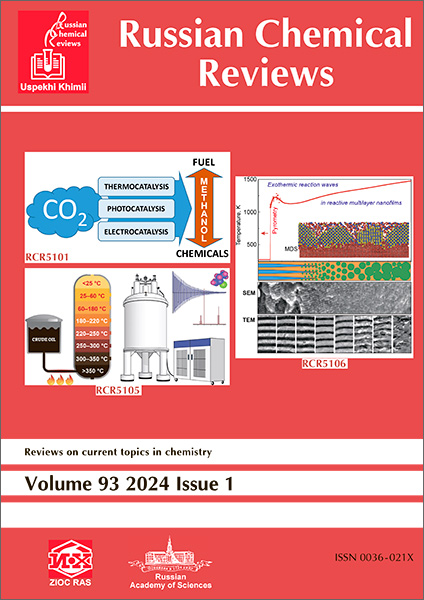Transition metal-free cross-coupling reactions to form carbon–heteroatom bonds
IF 6
2区 化学
Q1 CHEMISTRY, MULTIDISCIPLINARY
引用次数: 0
Abstract
The formation of carbon–heteroatm bond is the key step of synthesis of numerous organic compounds, including socially important products such as pharmaceuticals, crop protection agents and organic functional materials. These reactions proceed most efficiently when catalyzed by compounds of transition metals, first of all palladium. However, this approach has considerable drawbacks, in particular, high cost and toxicity of transition metal compounds and harsh reaction conditions required in some cases, resulting in limited functional group tolerance. This review describes the recent advances in the development of methodology of transition metal-free carbon–heteroatom bond-forming cross-coupling. It is shown that single-electron transfer and homolytic bond cleavage result in the generation of highly reactive radical and/or radical ion intermediates, enable the formation of new carbon–heteroatom bonds. These intermediates are generated using either visible light or electricity as energy sources or simple organic compounds acting as electron donors. Methods for carbon–heteroatom bond formation based on radical reactions proceeding under mild conditions and in the presence of labile functional groups are considered. The key mechanistic aspects of the reactions are highlighted. The review mainly covers the original publications of the current decade. The bibliography includes 302 references.过渡无金属交叉偶联反应形成碳杂原子键
碳-杂碳键的形成是许多有机化合物合成的关键步骤,包括药物、作物保护剂和有机功能材料等社会重要产品。在过渡金属化合物(首先是钯)的催化下,这些反应进行得最有效。然而,这种方法有相当大的缺点,特别是过渡金属化合物的高成本和毒性,以及在某些情况下需要苛刻的反应条件,导致官能团耐受性有限。本文综述了过渡金属碳杂原子成键交叉偶联方法的最新进展。结果表明,单电子转移和均裂键导致高活性自由基和/或自由基离子中间体的生成,从而形成新的碳杂原子键。这些中间体是用可见光或电作为能源或简单的有机化合物作为电子供体产生的。考虑了在温和条件和不稳定官能团存在下,基于自由基反应的碳杂原子键形成方法。重点介绍了反应的关键机理。该审查主要包括本十年的原始出版物。参考书目包括302篇参考文献。
本文章由计算机程序翻译,如有差异,请以英文原文为准。
求助全文
约1分钟内获得全文
求助全文
来源期刊

Russian Chemical Reviews
化学-化学综合
CiteScore
13.00
自引率
5.20%
发文量
27
审稿时长
6-12 weeks
期刊介绍:
Russian Chemical Reviews serves as a complete translation of the esteemed monthly review journal Uspekhi Khimii, which has been a prominent figure in Russian scientific journals since its establishment in 1932. It offers comprehensive access to the advancements made by chemists from Russia and other former Soviet Union countries.
Established in 1932, Russian Chemical Reviews is committed to publishing timely and significant review articles encompassing various facets of modern chemistry, including chemical physics, physical chemistry, computational and theoretical chemistry, catalysis, coordination chemistry, analytical chemistry, organic, organometallic, and organoelement chemistry, chemistry of macromolecules, applied chemistry, biochemistry, bio-organic chemistry, biomolecular chemistry, medicinal chemistry, materials chemistry, nanochemistry, nanostructures, and environmental chemistry.
 求助内容:
求助内容: 应助结果提醒方式:
应助结果提醒方式:


